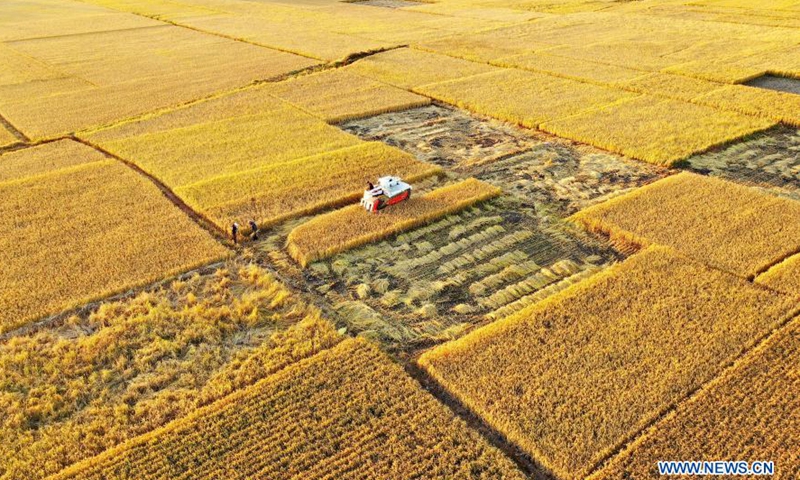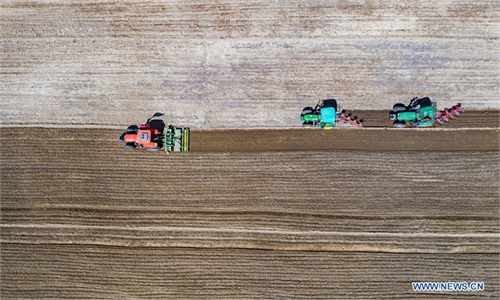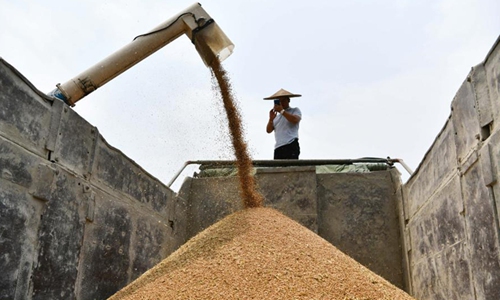SOURCE / INDUSTRIES
China to ensure domestic self-sufficiency in soy products including edible soybeans by 2021: Minister

Aerial photo taken on Oct. 18, 2020 shows harvesters operating in rice fields at Jiangzhuang Village of Luanzhou City in north China's Hebei Province. China's grain output reached nearly 670 billion kg in 2020, up 5.65 billion kg, or 0.9 percent, from last year, the National Bureau of Statistics (NBS) said on Thursday. This marks the sixth consecutive year that the country's total grain production has exceeded 650 billion kg. The bumper harvest comes despite disrupted farming as a result of the COVID-19 epidemic, which has been held in check thanks to efforts to ensure the transportation of agricultural materials and strengthen farming management.Photo:Xinhua
China will ensure domestic self-sufficiency in soy products including edible soybeans by 2021, Tang Renjian, minister of agriculture and rural affairs has said, according to People's Daily on Monday.
He said China will continue with its soybean cultivation plan, and maintain a cultivated area for soybean over 140 million mu, increase the yield and quality, and ensure the country to be self-sufficient in soy products including edible soybeans.
Tang also said China will focus on expanding its corn growing area in key regions including Northeast China.
Tang's remarks were made after China vowed to tackle core bottlenecks in agricultural technology in its new stage of rural development, aiming to "turn the table" in the seed industry to maintain grain security after a major policy meeting closed in Beijing last month.
In a rare move, the top Chinese authority for the first time elevated the need to strengthen the homegrown seed industry in the blueprint that guides the country's agricultural sector.
Tang said the independent innovation of China's seed industry lags behind that of developed countries. "If there are some extreme supply cuts in some fields, it will affect the speed and quality of agricultural development," he said.
Tang said it will enhance the seed bank construction, as the seeds can be seen as "semiconductor chips" for agricultural development, and keeping the cultivated land is the lifeline of agriculture, as they secure China's grain output and feed 1.4 billion people.
China is set to roll out the 2021 "No.1 Central Document" soon, which will focus, as always, on agriculture, rural areas and farmers' issues - always a top priority in China - the focus has shifted to a possible stranglehold in the agricultural sector.
According to the National Bureau of Statistics, China's soybean output, which is mainly for food, last year was 39.2 billion jin (19.6 billion kilograms), an increase of 3 billion jin over the previous year, an increase of 8.3 percent, and the output continued to recover growth.
Customs data showed that a total of 92.8 million tons of soybeans were imported from January to November last year, an increase of 17.5 percent year-on-year, and it is likely to exceed 100 million tons for the whole year.
Imported soybeans are mainly used for oil extraction to meet the needs of edible vegetable oil.


